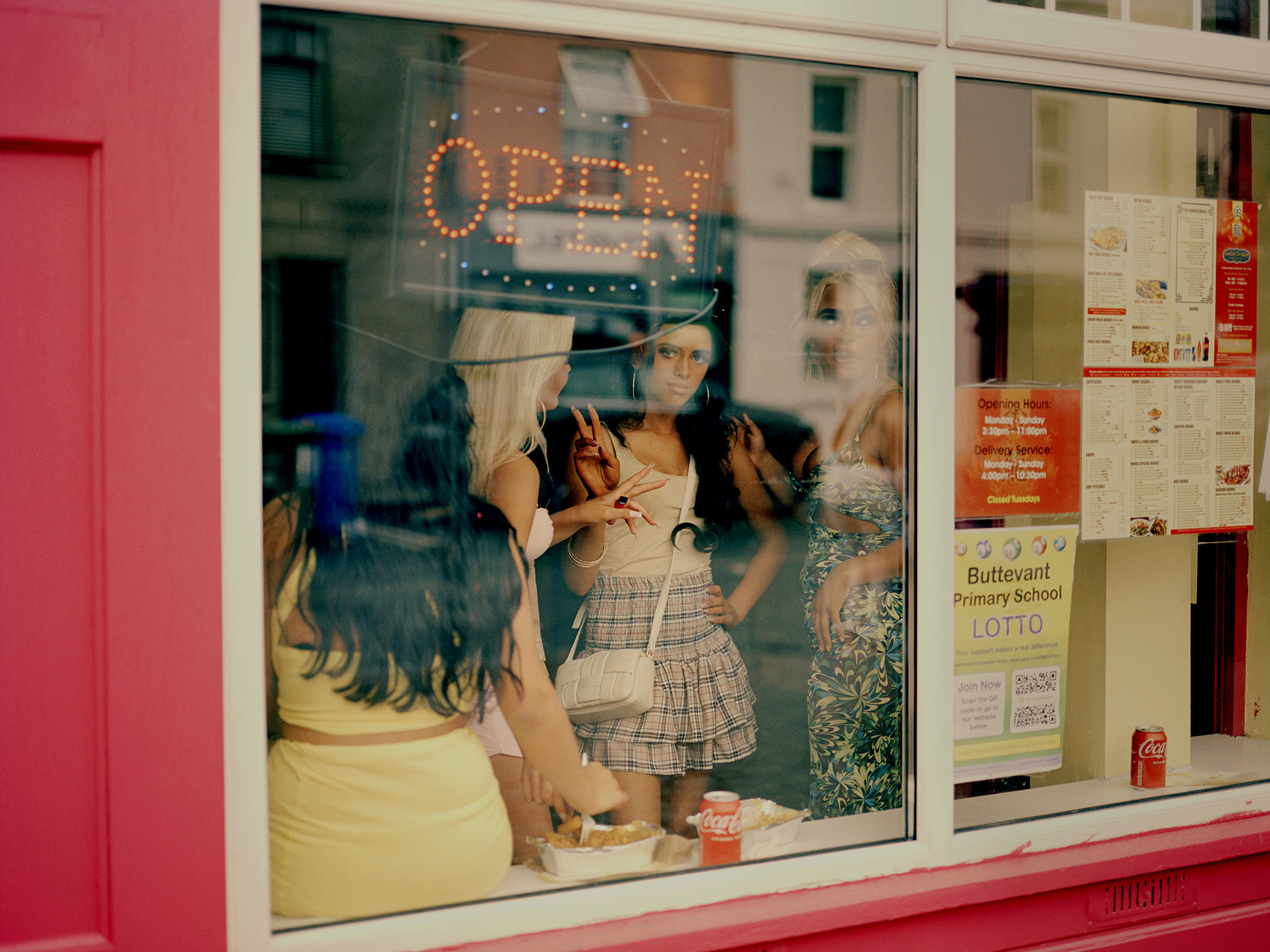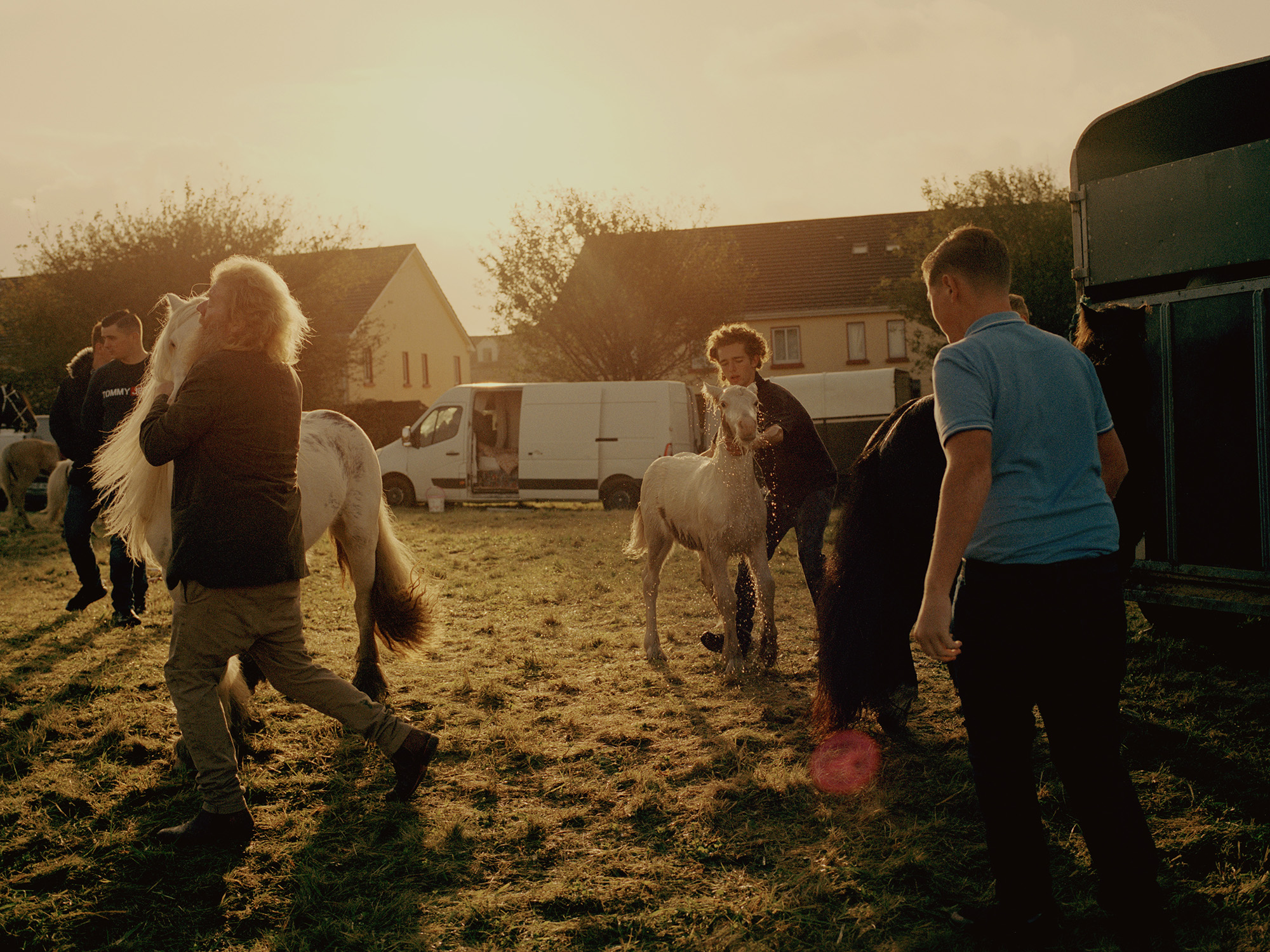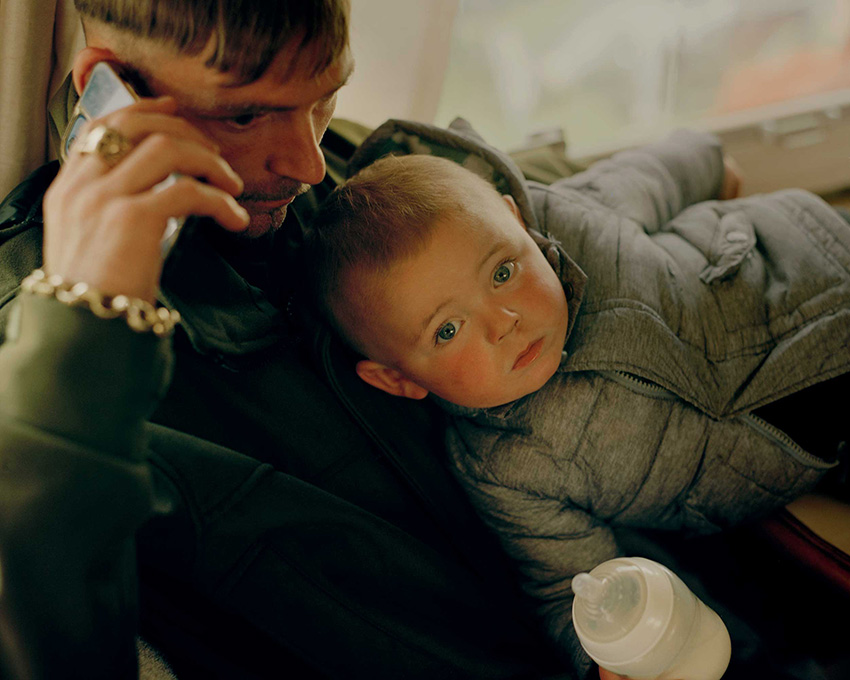© Sam Wright
Sam Wright’s new book, Pillar to Post, offers a tender portrayal of the stereotyped community in the UK and Ireland through collaborative storytelling
The Pillar to Post moniker is especially apt for Sam Wright’s new book, a tender and considered survey of the Traveller and Romani Gypsy community based in the UK and Ireland. Highlighting a first-hand account of the type of kinetic lifestyle Travellers and Romani Gypsy’s have long adhered to (and sometimes endured, on the occasions that their movement is dictated by the police and other bodies), the title borrows from an after-dark conversation at a community gathering, underscoring the Sheffield-born photographer’s collaborative approach to making pictures. “I thought it was nice that it was words from within the community,” he shares on a Zoom call.
Conducted over a two-year period, during which Wright travelled to eight fairs, beginning at Appleby Horse Fair in Appleby-in-Westmorland, Cumbria (an important date on the Traveller calendar, it’s occurred annually since 1775), the monograph’s earliest genesis arrived from a personal story of the photographer’s own: his great grandmother had been forced to denounce her Irish Traveller heritage when she married. “My uncle would talk about it, but it was almost a secret no one was proud of,” he says, describing his relationship with that aspect of her identity. “The story I’m trying to tell is less about my personal connection though, and more about the way the media has misrepresented the Traveller and Gypsy communities.”




“I just go in as me, with no preconceptions and try to create a truthful document”
Indeed, Wright discovered early how negative depictions of the community in popular culture – largely rendered via reality TV – have infiltrated wider public discourse, with those around him dismissive of his initial plans based on unrealised fears. “That was my first experience of the open prejudice people have, with people [I know] saying ‘don’t go, it’ll be a nightmare’,” he recalls. Actually, what Wright found was a warm and engaging group of people with whom he experienced, if not exactly a homecoming then a particular sense of comfort. “I don’t know if it’s just because it’s Appleby and it’s so brilliant – the freedom there – but it felt like it made sense for me to be there in a way,” he offers.
“I almost forget about photography when I do projects like this,” he continues, alluding to the trust-building and intimacy that shaped the work, some of which was a product of social media (Wright would share his early images in a Facebook group, encouraging people to use them as they wished). “I just go in as me, with no preconceptions and try to create a truthful document. And I guess my photography is quite straight up, it’s not massively edited or flat and gritty, but shot in nice light.” With Pillar to Post this sense of ease results in a rich portfolio of portraits and more documentary-led images, with children and young people – the next generation; the ones who will ultimately determine the community’s future – in the foreground. Photographs of horses, a key symbol of traditional Traveller culture and a linchpin of the fairs, are also woven through.
Anchoring these scenes is an essay from Damian Le Bas, a writer and artist of Traveller heritage who authored 2018’s The Stopping Places: A Journey Through Gypsy Britain. Considering the role of the camera – and by extension, the responsibility of the photographer – he discusses the apparatus as a primary tool for misinformation. “The camera not only lies, it might be the finest liar of them all, because we trust it like no other,” he writes. Wright, he determines however, deals in truth. “Because Wright’s photography doesn’t tell one story, a flat story bereft of dimensions. His photography tells the layers. Unlike the close-minded alarmist reportage of the local newspaper reporter, sent out to gather evidence of the menace of Gypsy life, secure in their conclusions before they even get to the scene, Wright’s photos are open.”
Currently framed on the walls of the National Portrait Gallery, as part of the Taylor Wessing Portrait Prize exhibition, an image of several men, their central figure young with slicked back hair, speaks to bustle of the fairs and the Traveller and Romani Gypsy lifestyle that first interested Wright. But there’s another image, suggests the photographer, that is perhaps more significant. “It’s probably not an image that exists, when people think of Traveller and Gypsy communities, but it was this nice moment that summed up a lot of experiences,” he says, highlighting a tight crop of a man on the phone, a toddler in his arms captivated by the camera. “He looks quite serious, but then there’s a real softness, with him holding the baby.”
A uniquely fulfilling project, Wright is hopeful about the way people will engage with the wider body of work (he’s also made a short film), but on a personal level there’s a sense of conflict about how and if to continue. “I feel like this is the first project that has a real kind of depth to it – it could almost exist as more of a historical document – and it’s informed my practice, massively,” he notes. “But it’s a funny one, now the book’s about to be released, it’s like I’ve just started; people are more comfortable, I’m sort of more accepted in the community. So I’m at a crossroads, because it doesn’t feel like it’s done.”





